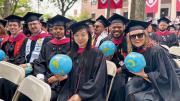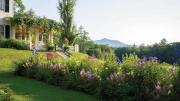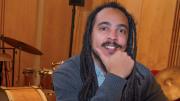HARVARD HAS about 125 notable old clocks. Fifty came in 1943 from Grenville L. Winthrop, A.B. 1886, LL.B. '89 (who gave to the Fogg Art Museum 3,700 treasures in all: archaic jades, paintings by Gainsborough and Ingres, Wedgwood in quantity, French porcelain, pre-Columbian sculpture, on and on). A wall clock, with later supporting case, made by Ahasuerus Fromanteel about 1660 is one of the first-known pendulum clocks; a swing marks a second gone. A favorite of Charles A. Ditmas Jr., G '45, honorary keeper of the clocks at the Fogg for decades, is a traveling timepiece made by John Paulet of London in about 1710. Only 6Zx inches tall, it has a gilt case, a silver face, and an alarm. Among the Winthrop clocks are Dutch musical affairs that play tunes on as many as 16 bells and a delightful English musical mantel clock, made by John Thwaites about 1780, with a case of red tortoiseshell, silver finials by Hester Bateman, and a four-tune repertoire.
William J.H. Andrewes, Wheatland curator of the Collection of Historical Scientific Instruments, looks after about two dozen clocks, most of them Harvard's precision timekeepers, including two hydrogen masers and a cesium-beam atomic clock. "The earliest timepiece, which probably dates from the late seventeenth century, is by the famous English clockmaker Thomas Tompion," says Andrewes. (He patented the cylinder escapement.) "We have an English regulator--i.e., a clock designed to provide a standard by which other clocks could be regulated --which was bought by Harvard in 1765 for £35 14s. The remaining clocks date from after 1800. Some were used for astronomical purposes-- one, by William Bond and Son, being the timekeeper for determining standard time for New England in the 1870s."
The other 50 of Harvard's elderly clocks ticktock in meeting rooms and in the offices of the favored. Andrewes and Sandra Grindlay, curator of the University Portrait Collection and manager of its loan program, have inventoried them. They include a banjo regulator clock made in 1829 by Massachusetts craftsman Simon Willard that now regulates the dean of the Faculty of Arts and Sciences. Willard had been employed by Harvard to care for its clocks for 50 years and gave this one to the College in gratitude.
The clock shown here stands in the office of the president. It was made by Joseph Gooding, born in Dighton, Massachusetts, in 1773, who in 1797 began the manufacture there of tall, mahogany-cased clocks that told time, the day of the month, and the moon's phases. This was his eighth clock. Grindlay's research suggests that Gooding and his four brothers, apprenticed to him, might have made all parts of their clocks-- works, dials, and cases--a tour de force in America at that time. The insect on the dial, which will not be shooed away, reminds us of what we know well about time--millennia fly.





